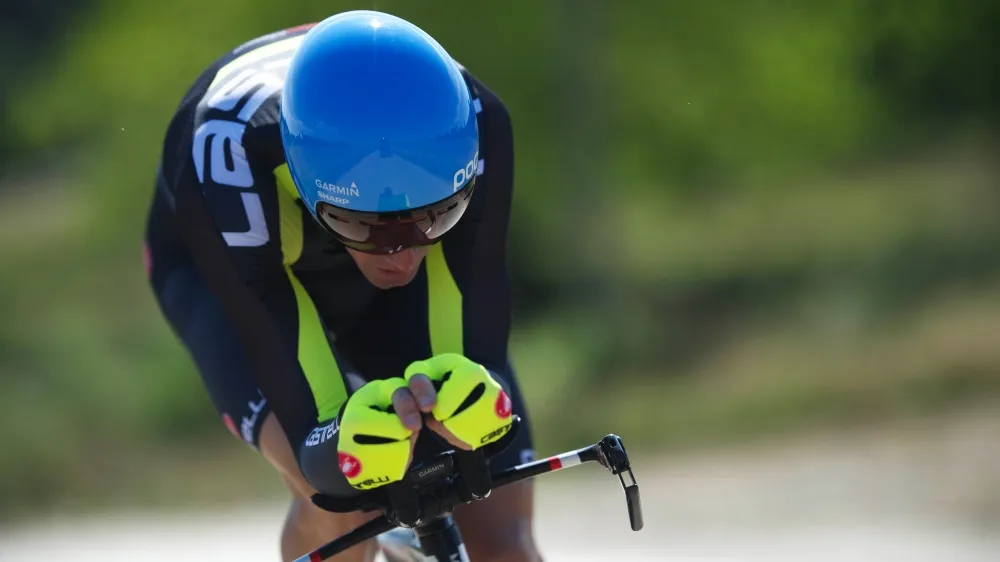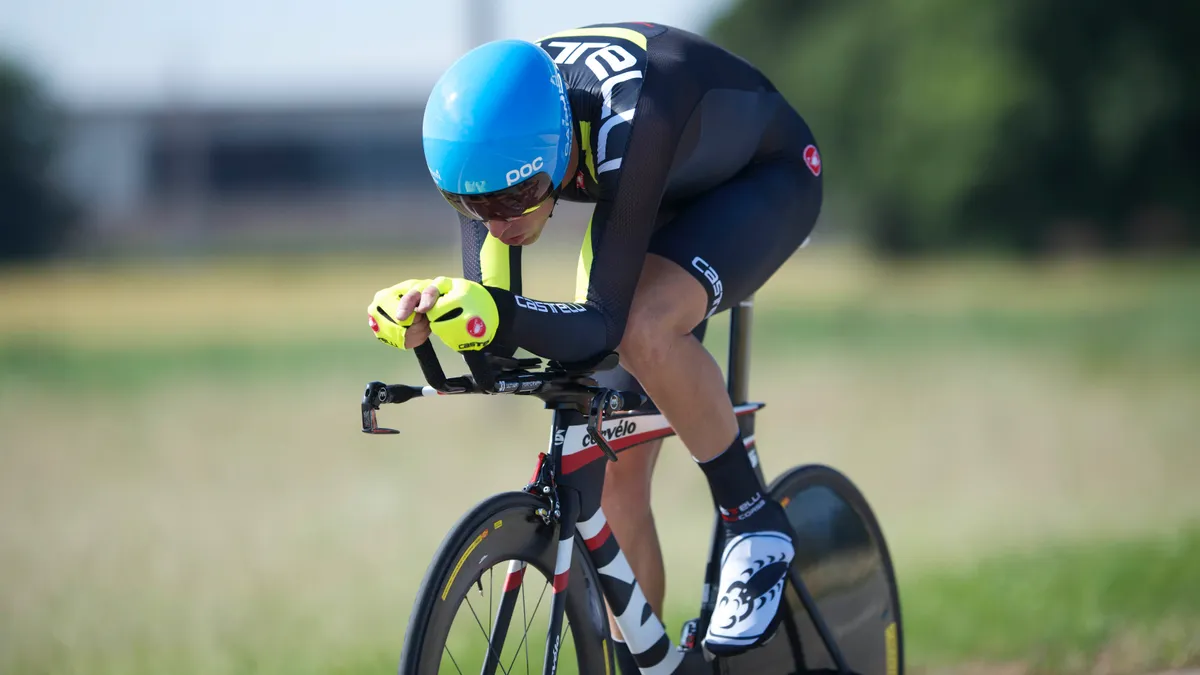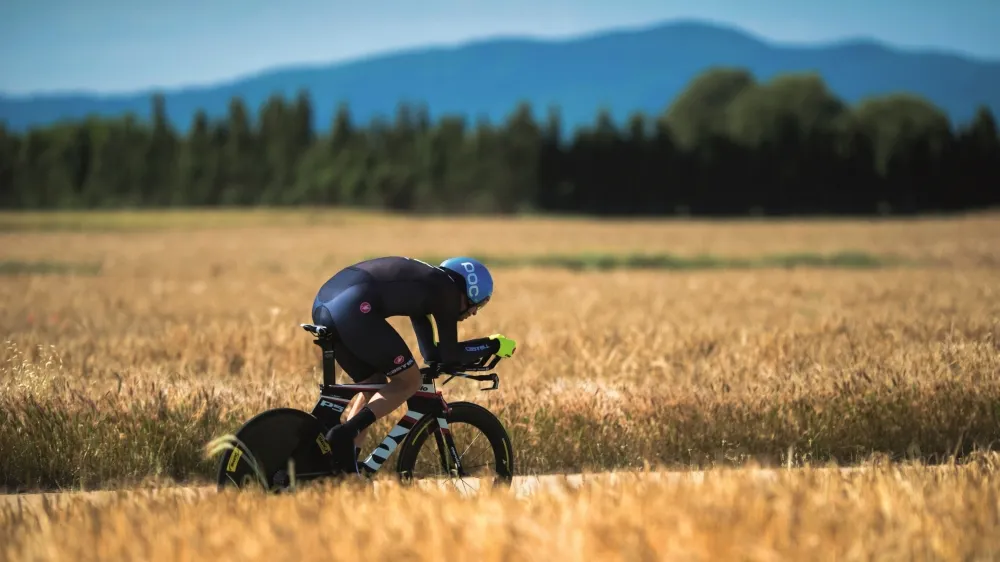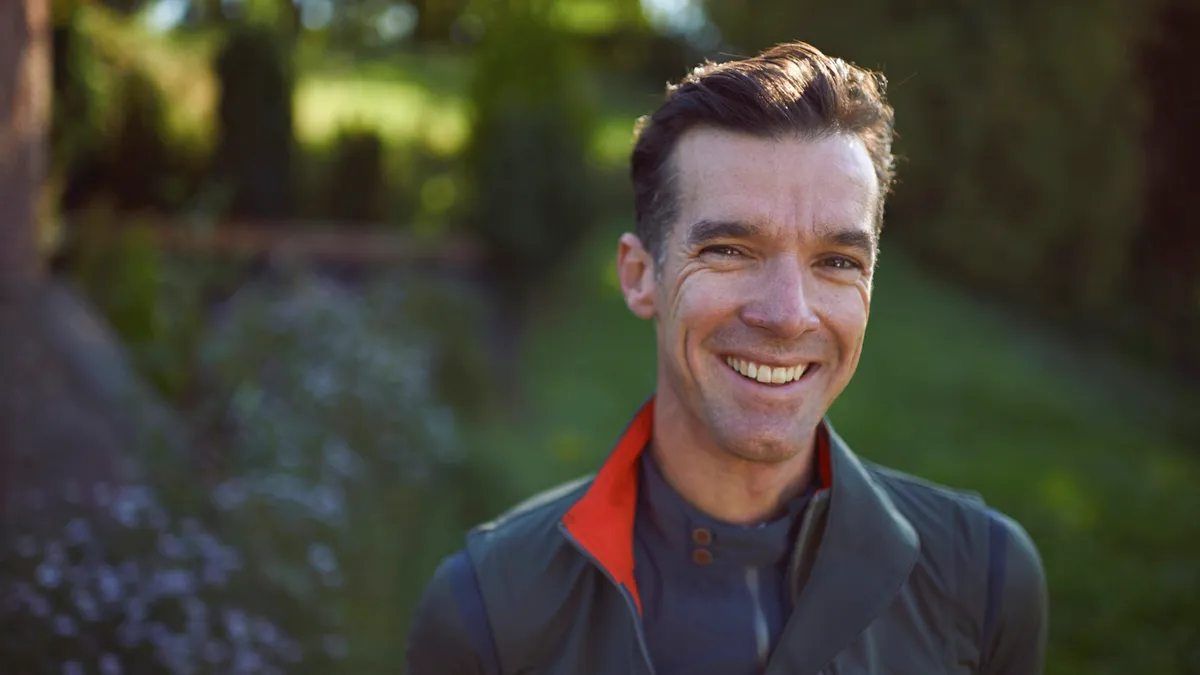This is a sponsored post by David Millar in association with A1 Members.
With numerous Grand Tour stage victories and the leader’s jersey in all three, David Millar has to have a great deal of knowledge on how to become a great bike racer. Now retired from the professional game, David has taken time out to describe the time trial system he developed over the course of his career and shares it in his ‘David Millar TT System’. Produced in conjunction with A1 Coaching, there is something in this for all riders, along with added insight in the associated free 4-Part Video Training Series.
The time trial – ‘The Race of Truth’. The ultimate test, beautiful because of the elegance of its simplicity. Just you, alone, against the clock.
Simple, isn’t it?
Well, ‘yes’ and ‘no’.
‘Yes’: I love the TT, mostly because of that elegance and simplicity. It takes you into a zone that you could not otherwise experience.
But ‘No’ also: I want to bust the myth that raw power alone is the defining aspect of the TT – that it’s only for the big diesels, that it lacks strategy and nuance, and that it’s not for the thinking racer.
So, in this introductory article I am going to tell you why I love the TT, and then I’ll challenge the idea that it’s simple and for the unthinking.
I’ve studied the TT for 20 years, gradually refining my approach and getting better at it. I eventually broke this down into five key elements and, taken together, these are the keys to the system which I have found most effective.
Over my next five blog posts I’ll be going through the main points of my system and, in addition, I’ll be giving you links to free videos which provide more information. These are presented by myself and the founder of A1 Coaching, Anthony Walsh, who is also an ex-pro and still competes in the elite amateur ranks.
The love story
time trial
noun: time trial; plural noun: time trials
1. (in various sports) a test of a competitor's individual speed over a set distance, especially a cycling race in which competitors are separately timed.
2. an exercise designed to test the time needed for a task or activity.
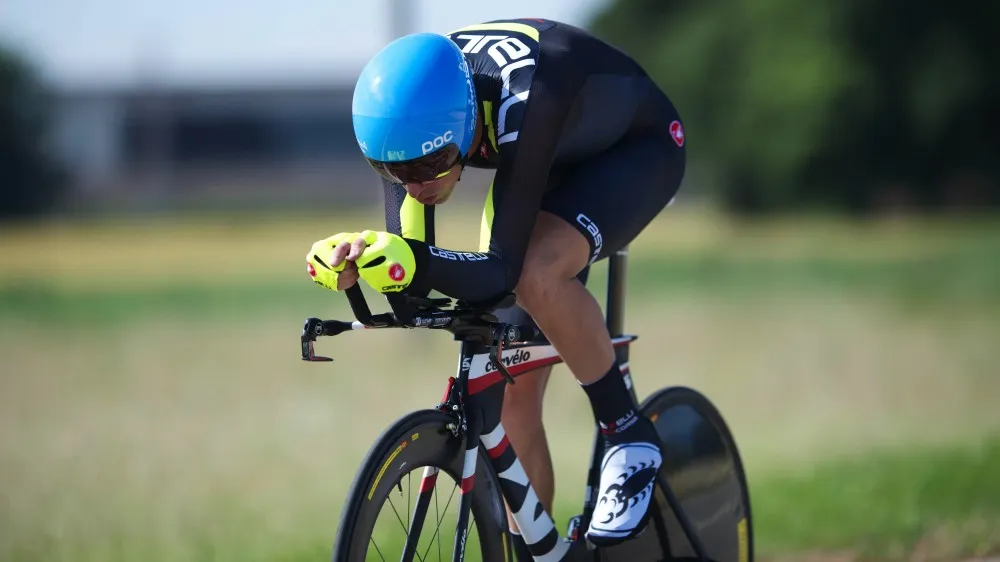
In France it’s the Contre-La-Montre, in Spain Contrarreloj. Yes, it is the purest of events, you against the clock. All you need is a start, a finish, and a time. You don’t need competitors or judges, and the course can even be yours to create.
It’s you versus time: how fast you alone can go over the distance. No drafting, no team help, no hard-luck excuses, nowhere to hide: for this reason it is referred to as The Race of Truth.
The British are a time trial nation, a culture created from necessity rather than a disdain for road racing. It began in 1890 when bicycle racing of all types was banned on British roads. In order to continue racing an underground movement was begun, designed to allow racing to continue without the authorities being aware.
It was subversive and quite simple: black clothes would be worn as camouflage, no identifying numbers were to be displayed, and the riders would set off at one minute intervals on a secretly coded course. The cycling time trial, and the traditions that would define it, was created.
Starting out
I did my first time trial when I was 15, one organized by my local club, High Wycombe CC. Before long I was a regular at their Evening League: every Tuesday night I dedicated myself to the Longwick 10 (with the secret code ‘HCC202’). I grew up as a bike racer on that course.
Like so many before me I was hooked: hooked on the challenge of pushing myself harder, learning to go deeper, making myself go faster. It became a pursuit of knowledge, a journey of learning through science – physical, psychological and mechanical. I began to understand how little changes to my position, pacing, or cadence could make big differences.
Eventually, they all began to synchronize, morphing into one beautiful, fluid process.
What was wonderful was that the HCC202 never changed. I’d turn up to the same layby and pay my entry fee to the same volunteers from the club. Two things that did change, though, were our ages, and my speed.
It was a course I raced on and off for 20 years, it saw me grow and change – the 15 year-old clueless kid from Hong Kong became a battle-worn, seasoned pro with the scars to show for it.
I did 23:58 the first time I rode it back in 1992. Fifteen years later, a week after finishing my first Tour de France after coming back from my ban, I rode the same course in 19:05. It took me 15 years to gain five minutes.
I’ve loved the journey of learning, much of it self-taught. There have also been many people along the way who have helped and guided me.
But, while I loved and respected the long-held traditions and handed-down wisdoms associated with the sport, I began to question and challenge – why are the ways we are told to do things actually the best? Just because it’s always been done that way? No, the time came when this just wasn’t good enough for me anymore.
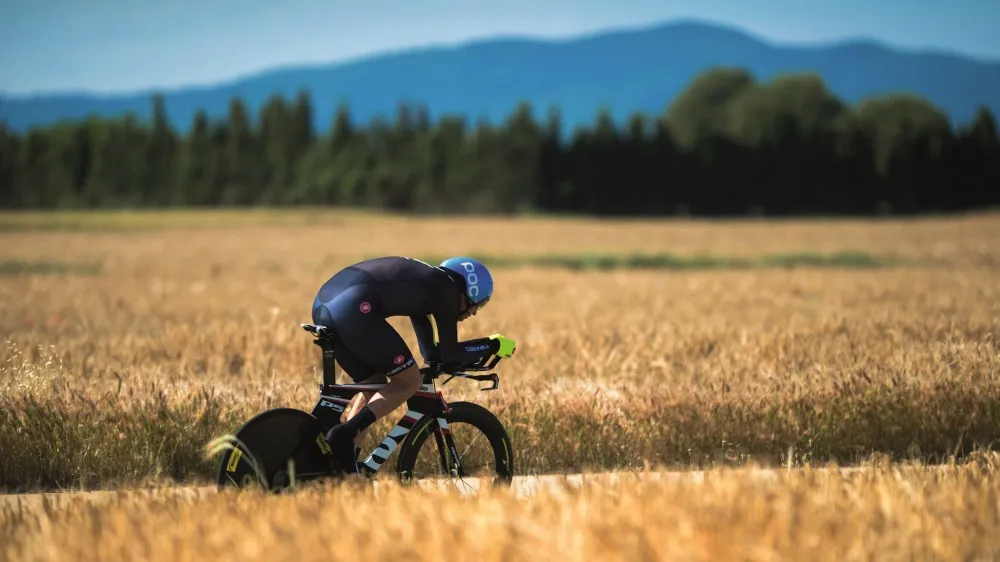
Questioning – the evolution of the Millar TT System
Asking questions, and studying the art and science of time trialling, became one of the biggest aspects of my 20 years of racing experience. Even when I got to the top of the professional ranks, and studied the best testers in the world, I took nothing for granted. I experimented and studied, and finally I think I got it right.
By challenging the myths, and finding things out for myself, I was finally able to distil my winning approach down to five key elements.
It frustrates me that so much misinformation still prevails out there. And it also annoys me that so much emphasis is put on expensive equipment and testing, when by far the greatest proportion of speed gain can be found otherwise.
So, over the next five days I am going to share these elements of my TT system with you and give you the information that will help you go faster in the TT.
Also, in conjunction with Anthony Walsh from A1 Members and hosted by BikeRadar, you can watch some free videos which will provide yet more information.
I won’t tell you to spend a fortune on sexy gear and exotic testing. I can’t promise that you will gain X number of watts or that you will lose Y number of minutes off your time.
But, I can promise that you’ll go faster.
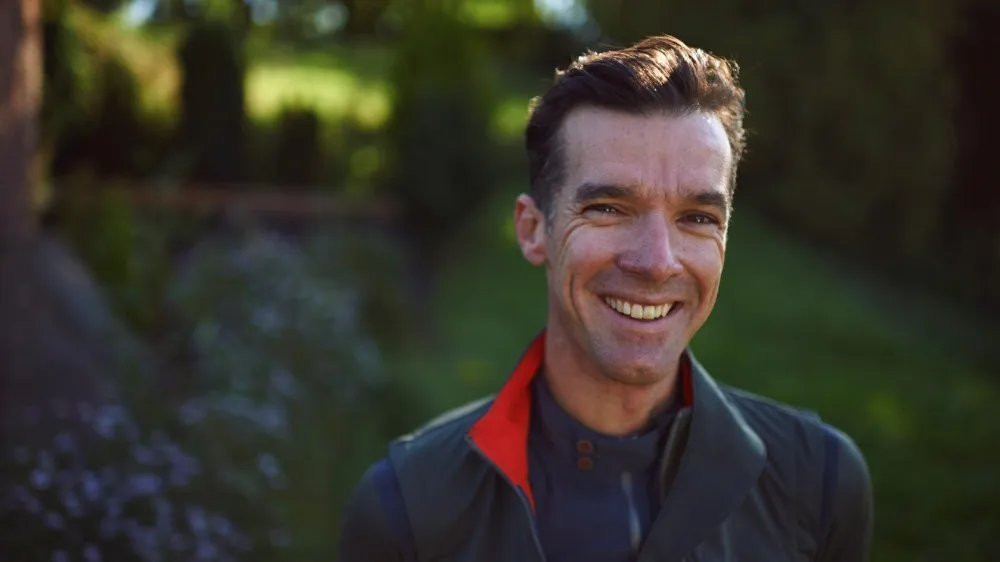
The key elements of my system
I hope you’ll check back over the next five days as I go through the following five key elements of my TT system. In summary, this is what you can expect:
Element 1: Position
The biggest obstacle to speed is air resistance and good aerodynamics is vital to success. However, the difference in my system is the emphasis on self-reliance in optimizing your position. Too much emphasis is placed on some ‘expert’ finding the best position for you but, in this post I’ll stress reliance on your own learning, testing and evaluation – how to find the best position for your unique physiology, and not some theoretical ‘best’ position.
You will also be glad to learn that the best position, and resultant speed, doesn’t need to cost a lot of money on gear and testing.
Finally, I’ll outline how your optimum position is dynamic – how it needs to morph to suit the varying racing conditions you will encounter.
Element 2: Equipment
If you are into equipment and technical details, then time trialling definitely suits! In this post I’ll outline how equipment can gain you speed. However, I won’t be encouraging you to spend loads of money – I may be a bit of a technical geek but I don’t believe in just throwing money away needlessly.
As I stress in Element 1, your body offers by far the greatest resistance to speed, so I’ll put the main emphasis on how equipment can reduce that drag – for example, how to make your body ‘slippery’ through the air. I’ll also give you some ideas on how you can select the best helmet for yourself.
Other areas for marginal gain will also be discussed, such as lubrication, wheels and tyres.
Element 3: Course recon and pacing
Some people think there is little or no strategy in time trialling, that it’s just brute horse-power against the clock. This element of my system will show this to be greatly misleading.
I will explain how pacing is more than just an abstract exercise in speed control, planned outside the context of the course you are targeting. From this, you will learn how to reconnoitre a course and develop a pacing plan specifically for that course.
Other related areas effecting your performance will also be covered, such as course segmentation, visualization and relaxation. I will also illustrate how the poor use of power data can work against you, as opposed to the benefits of developing finely-tuned pacing senses.
Some of my best time trial wins came from outside-the-box strategies, and you will learn about these in this crucial element of my system.
Element 4: Contextual training
A lot of training programmes for the TT are simplistic in their approach – ‘ride at X amount of effort, for Y amount of time, recover for Z amount of minutes, and repeat’!
Yes, some of this is necessary but proper TT training goes well beyond that. You must contextualize your training for the varying racing contexts. I will outline how this will condition your body and mind to implement, under the stress of racing, the other key elements of the system that I have covered: position, cadence, pacing, and such like.
Whether you are a dedicated time triallist, or a road racer who needs to do good TTs, you must incorporate these essential training approaches into your programme, whether it is developed by yourself or a coach.
My system breaks these essentials into three basic key approaches: position training; pace control training; and speed endurance training. This blog post will explain each.
Element 5: Critical training sessions
Training for building the engine is pretty straightforward in way – a sequence of grinding session with the right training load and in the right order. These, planned and done properly, will stress your system and cause the physiological adaptation needed.
However, if you do these in isolation of the other elements of my system, and especially not based on the essential training approaches outlined previously, you will not do yourself justice in your key events.
My TT system is about developing, co-ordinating and integrating the various components of TT preparation and performance, and this post will provide examples of how to add this dimension to your critical training sessions.
The guys at A1 Coaching and I really enjoyed working on this. I hope you enjoy the series and the linked videos, and that they help you to become a better time triallist.
The ‘David Millar TT System’ gives a roadmap to all riders on how to improve their time trialling. The system isn’t a strict set of rules on how to do it ‘right’, or an argument for purchasing an expensive list of equipment. Because every rider is unique, Millar’s system reveals how everybody can unlock their full potential and become the best time triallist they can possibly be.
